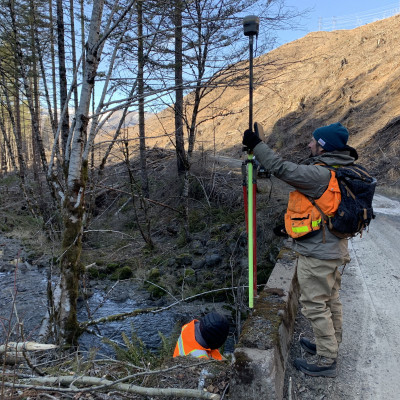Molalla River Restoration - PART II: The Partnership
*Note: This is Part Two of a Four-Part Series. Read Part One, Part Three and Part Four.
In November 2021, when Oregon Department of Fish and Wildlife (ODFW) North Willamette District Fish Biologist Ben Walczak and Habitat Biologist Dave Stewart contacted us about habitat restoration in the Molalla, it wasn’t clear where the restoration would take place. Still, they were clear that the Molalla River is a priority for the department. In addition to being free-flowing and having a high potential for restoration, ODFW has also been working to reintroduce spring Chinook to the upper Molalla River for several years.
The fires of 2020 incinerated critical habitat for both winter steelhead and spring Chinook, but the Oregon state legislature recognized the need to restore watersheds affected by the fires and earmarked millions of dollars for fire recovery restoration work, prioritizing habitat restoration that protects municipal water sources and important fish habitat. Using that as their guiding criteria, Ben and Dave assembled an amazing team to take on the daunting task of watershed-scale restoration.
Native Fish Society was just the first piece of that team. The long-term commitment and relationship-building by River Steward (and NFS fundraiser) Tom Derry enabled this work to take place. Without Tom’s outreach, it’s unlikely ODFW would have approached us about this project. Our role in the team is to write and administer the grants needed to do the work and manage the various components of the project.
The Bureau of Land Management (BLM) owns a large amount of acreage in the Molalla River watershed, including the roughly 15-mile-long Molalla River Recreation Corridor, so they were a natural partner to include. BLM hydrologist Peter Kauss, and fisheries biologist, Jeff Mcpherson were able to secure a donation of 1000 burned trees from BLM land to use for instream placement. Identifying an interested landowner was critical due to the restrictions on the fire recovery funds being used only on privately-owned lands. Fortunately, a timber company with land in the upper Molalla watershed, Fruit Growers Supply Company, was happy to join the partnership, as it helps meet their goals for environmental stewardship. Jim Crawford, the area forester for Fruit Growers, has played an invaluable role in the team, helping map and locate specific sites, among many other necessary tasks.
At our first meeting on the ground, it quickly became clear that all partners recognized a need for a long-term commitment to restoration in the watershed. The highest priority was adding as much wood as possible to the upper Molalla River tributaries that run through extremely steep terrain. Given the severity of the fires and the extreme gradients of the hillsides, adding large wood to these tributaries is critical to capture sediment and slow its release to the watershed. Future restoration efforts will center around restoring side channel and wetland habitats on BLM land. By taking this watershed-scale approach, starting near the headwaters and working our way downstream, we’ll get the most significant benefit for wild fish, the humans who rely on the watershed, and the river ecosystem as a whole.
*This is Part II of a four-part series of the restoration efforts on the Molalla River. Read Part I HERE, Part III HERE, and Part IV HERE. Additional parts will be posted over the next couple of weeks. Stay tuned!



